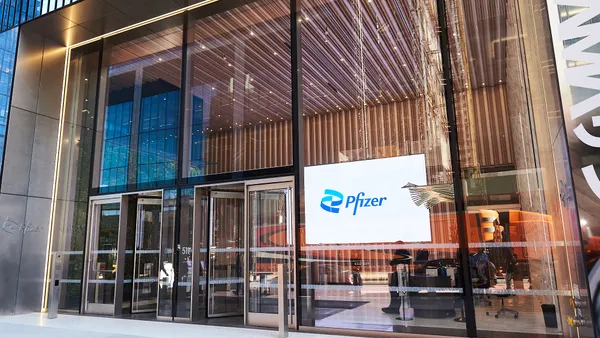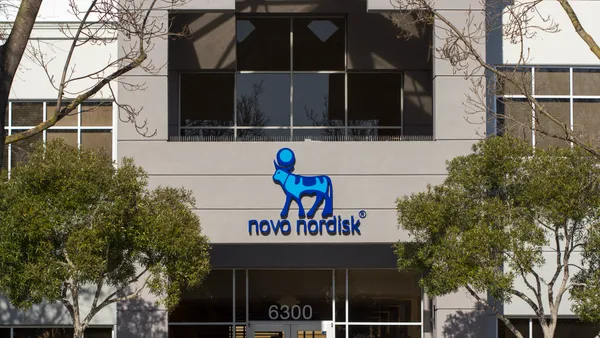Strategy Drives Partnerships in Closed Loop Marketing Closed loop marketing (CLM) is defined as the ability to optimize customer communications by capturing initial brand interactions and measuring for marketing effectiveness and ROI, and then refining the experience for future interactions. As more pharmaceutical companies become increasingly savvy in deploying closed loop marketing (CLM) across their entire brand portfolio, the need for a strategic CLM partner intensifies. CLM is quickly changing pharmaceutical sales and marketing. The implementation of CLM is making true two-way detailing possible, and every discipline inside pharma is looking to capitalize on the interaction. In today’s CLM environment, when a sales representative engages a target, he or she does so with the equivalent of the entire brand team in the same room. Through the benefits of CLM, sales management is right next to the rep, which helps maximize the delivery. Marketing is there too, focusing on the effectiveness of the brand messaging. Market research is sitting comfortably behind the rep, gathering information to help build a deeper understanding of the targets’ motivations, barriers, and, ultimately, the targets’ changing needs. Importantly, CLM is not limited only to the sales rep/physician interaction it also applies to other communications channels. One of the biggest objectives for implementing CLM inside the pharmaceutical company is the disproportional benefit brands achieve from CLM delivering the right message to the right audience at the right time. However, this can only be fully realized through a strategic collaboration and an enterprisewide implementation of CLM. Ultimately, it is this environment that will enable pharmaceutical companies to take advantage of the channel, content, and frequency best suited for the audience — and situation — so that an optimized brand experience capable of meeting the ROI promised by CLM is delivered. The high-potential impact of CLM has contributed to its growing status as a critical success factor for the future growth of pharmaceutical sales — one that the industry must master to ensure a competitive advantage as mainstream communications continue to go digital, online, and interactive. Pharma is the Early Mover in CLM While not traditionally an early mover, pharma leadership wasted little time in recognizing the significant, market-changing potential of CLM as evidenced by the penetration of CLM initiatives across the industry. From the first step, pharmaceutical companies focused on bringing the power of CLM to their most effective and most profitable sales channel. Initially, CLM execution involved moving brand messaging designed for the printed detail aid directly onto the Tablet PC. At the time, brand marketers tapped one agency — usually an interactive agency — to build messaging on Tablet PC platforms. Some companies understood that data capture and metric analyses, which are the underpinnings of true CLM, could lead to success earlier in the sales cycle. The industry is now appreciating the advantages of a companywide CLM approach and companies are moving into position to quickly accelerate this evolution. Make no mistake, CLM in the pharmaceutical space is still in its infancy and all parties have much to learn to realize the full promise of closing the loop. Expert opinion suggests that the industry is moving into a period in which strategic CLM partnerships will drive the next wave of improvements. To be successful today, enterprisewide CLM initiatives require a carefully orchestrated symphony of brand constituents led by a strategic CLM provider experienced in multipartner and multiteam collaborations. These brand groups include the client and its various internal departments, the ad agencies, the interactive agencies, the software and IT companies, and the data analytics companies. Close collaboration is essential to creating the brand experiences necessary to build and sustain enduring customer relationships. Partnering for a Common Goal To support this complex collaborative environment, the CLM partners need to be well-versed in developing strategies, deploying tactics and utilizing technologies aimed at engaging customers, capturing reactions, analyzing behavioral patterns, evaluating results, and using derived learnings to drive the right message to the right targets. In essence, CLM partners must be versed in CLM best practices. Partnership Management is Essential to Successful CLM Partnering with different groups to create enterprisewide CLM can be challenging. It’s natural for some companies to exert their own biases and approaches during CLM engagements, but when different groups attempt to insert their own preconceived notions, synergies are lost. And for pharma companies, this translates into lost time, energy, resources, and most importantly, money. E-marketing-based interactive agencies experienced in building CLM initiatives through strategic partnerships understand how to avoid the biases and overlapping issues that tend to threaten the essential multiple-partner program success. Of course, partnerships also apply to the client side. When determining partnership roles and responsibilities, many functions are directed toward internal client resources. Some of these include market research, medical/legal, marketing, IT, sales management and training, internal agencies, and other functions that are critical players in the CLM process. Coordinating all of the different areas takes an organized and collaborative approach to determine the right groups and people and how their involvement allows for the process to run smoothly. Once the roles and responsibilities have been determined, the task of providing the workflow process is applied for all the partners and clients to follow. Finding the Right Partner for CLM The pace of the CLM evolution has not abated. Rather, it continues to accelerate at a fast rate. As pharmaceutical companies continue to experience the value that strategically focused, interactive CLM partners provide, many are now insisting their CLM partners sit alongside traditional advertising agencies at the brand and corporate tables. Today, eight out of the top 10 global pharmaceutical companies are currently in various stages of the CLM process, including transforming their salesforces into valuable knowledge partners that are capable of driving relevant, brand-extending interactions with physicians. This trend in business advancement is expected to continue to evolve as technology, knowledge and information exchange, and communication optimization become increasingly more sophisticated. Kinect Geoff Melick Senior VP, Managing Director Kirk Nielson Senior VP, Client Services Director Successful enterprisewide CLM initiatives are the result of a carefully orchestrated symphony of brand constituents led by a strategic CLM partner experienced in multiteam collaboration. Kinect, Chicago, is a full-service interactive agency and a business unit within the Corbett Accel Healthcare Group that creates dynamic digital solutions with the goal of reaching target audiences via compelling creative that is delivered through the most effective channels. For more information, visit kinect.com. VIEW on E-Solutions October 2007
An article from


Strategy Drives Partnerships in Closed Loop Marketing
Filed Under:
Commercialization








